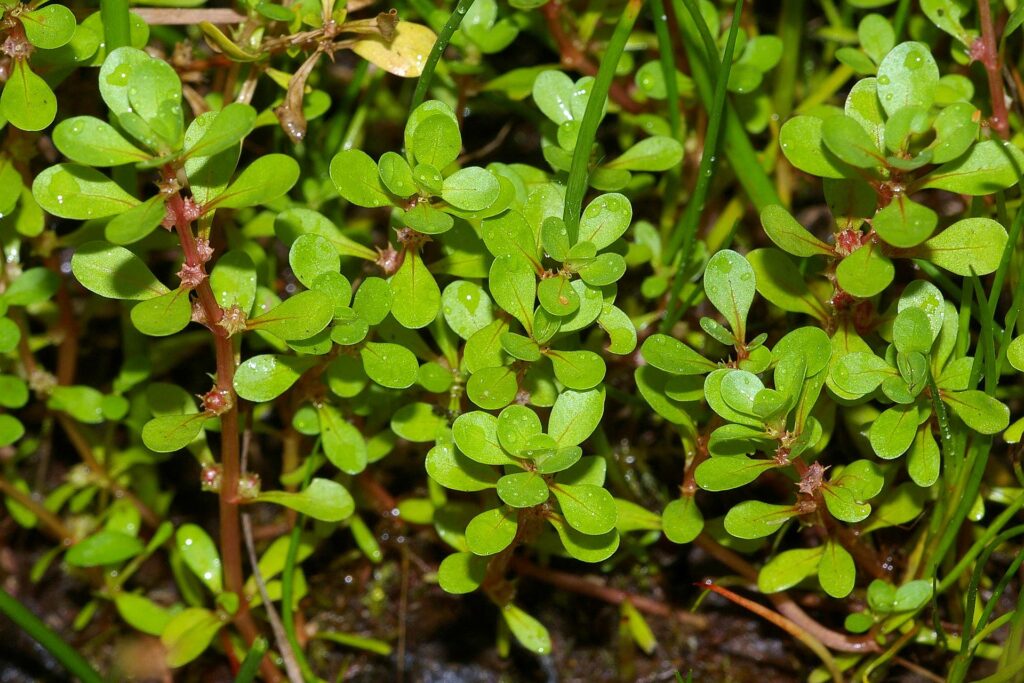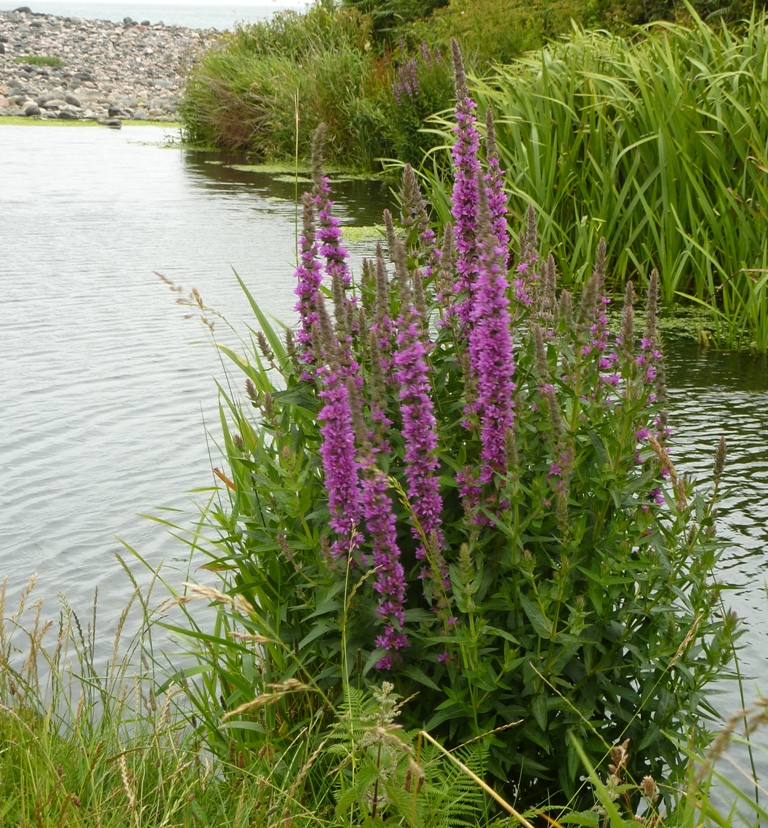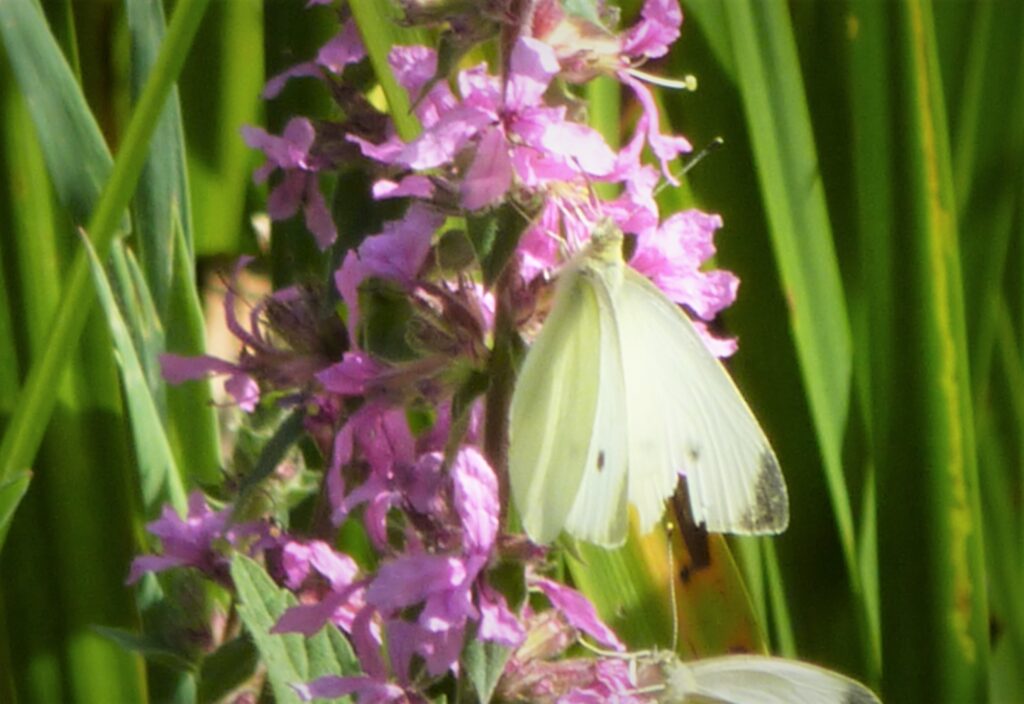
Grass-poly or Lythrum hyssopifolia was in the news the other day:
A rare plant that vanished from a farmland pond more than a century ago has ‘come back from the dead’.
Delighted conservationists found the pinkish-flowered species, known as grass-poly, growing in rural Norfolk by a neglected waterhole.
The stunning plant reappeared after seeds submerged in the mud were disturbed during work to restore the pond.
Lets have a look at this plant and the rest of its family!
Thanks are due for the information found on various websites (mainly Wikipedia) and books for which I provide links. There is colour coding for easy reading. Blue and yellow for general interest, green for wildlife and other uses and pink where there are medicinal uses or warnings. All pictures are by Matt Summers otherwise mentioned.
It is rare in the United Kingdom, extremely local in S. England and Channel Islands according to Stace.
It is in the Loosestrife family or Lythraceae which is Family 72 in Stace between the Geraniaceae and the Onagraceae. There is only one genus; Lythrum.
There are only 4 species of Lythrum in the B.I. and 3 of those are native.

Lythrum portula or Water-purslane is a procumbent annual, growing in damp soil or in water.
According to PFAF the leaves can be eaten raw or cooked.

Lythrum salicaria or Purple loosestrife is the best know Lythrum as well as the most handsome one!
This plant grew abundantly in my former neighbour’s allotment. Despite being on heavy clay soil and not near any water where I usually seen it, it always attracted plenty of bees!
I found this interesting: there are three different flower types, with the stamens and style of different lengths, short, medium or long; each flower type can only be pollinated by one of the other types, not the same type, thus ensuring cross-pollination between different plants. The flowers are visited by many types of insects, and can be characterized by a generalized pollination syndrome.
It was introduced into temperate New Zealand and North America where it is now widely naturalised and causing problems!

It is a wonderful plant to enhance wildlife gardens and is particularly associated with damp, poorly drained locations such as marshes, bogs and watersides.
The flowers are pollinated by long-tongued insects, including bees and butterflies.
A number of insects use Lythrum salicaria as a food resource.
The black-margined loosestrife beetle Galerucella calmariensis and the golden loosestrife beetle Galerucella pusilla feed on the leaves. The loosestrife root weevil Hylobius transversovittatus and the loosestrife flower weevil Nanophyes marmoratus often stop the plants to produce seeds.
Caterpillars of the engrailed moth (Ectropis crepuscularia), a polyphagous geometer moth, also feed on Purple loosestrife.
It has been introduced in many areas of North America by bee keepers, due to its abundance of flowers which provide a large source of nectar.
It is cultivated as an ornamental plant in gardens. The flowers are showy and bright, and a number of cultivars have been selected for variation in flower colour, including:
- ‘Atropurpureum’ with dark purple flowers
- ‘Brightness’ with deep pink flowers
- ‘Happy’ with red flowers on a short (60 cm) stem
- ‘Purple Spires’ with purple flowers on a tall stem
- ‘Roseum Superbum’ with large pink flowers.
The cultivars ‘Blush’ with blush-pink flowers, and ‘Feuerkerze’ with rose-red flowers have gained the Royal Horticultural Society‘s Award of Garden Merit.
The plant is hardly used in Britain according to Julian Barker but is much better known across the Channel for its actions which are:
Astringent, haemostatic, anti-inflammatory and antimicrobial. Some uses are: Intestinal colic, diarrhoea, leucorrhoea, menorrhagia, tonsillitis, bacterial throat infections and will arrest nose bleeds.
The grass-poly is said to have similar therapeutic properties to Purple loosestrife
